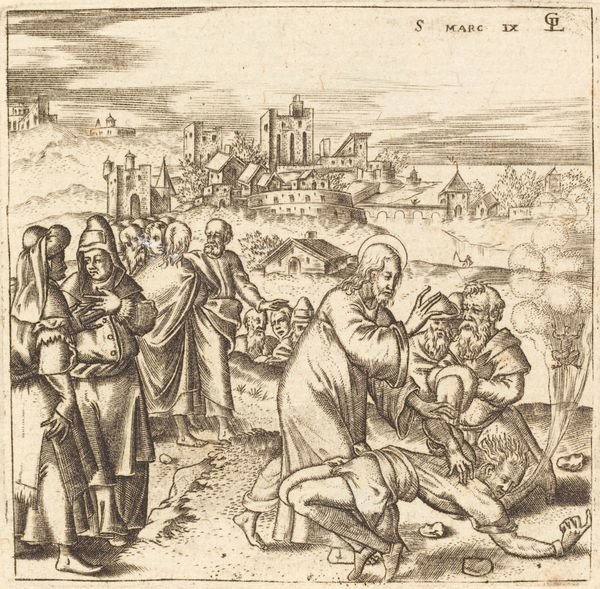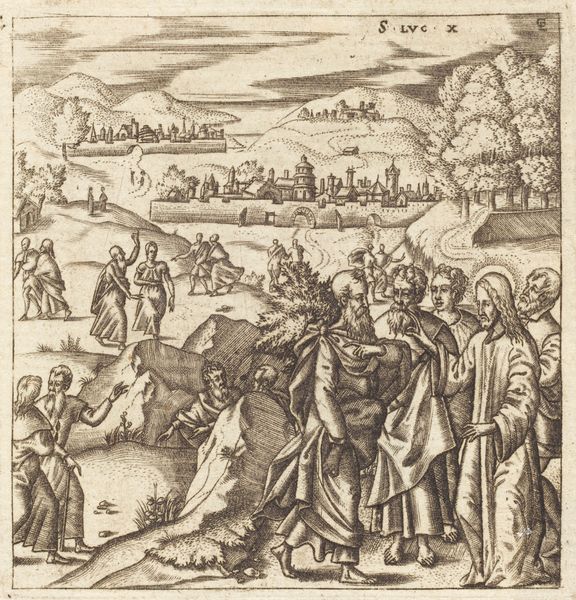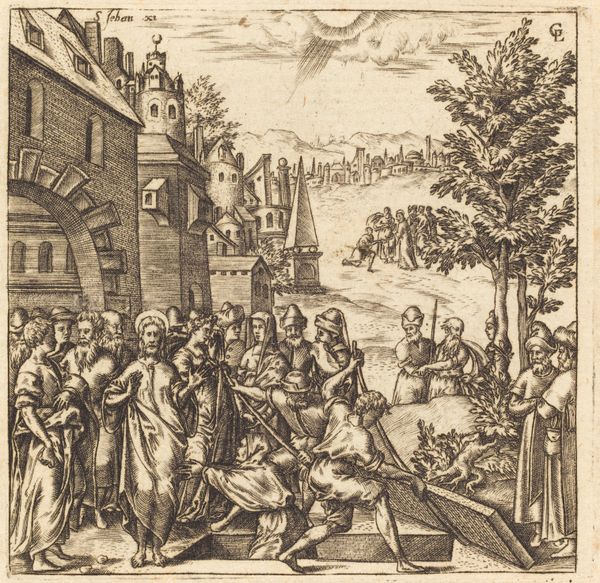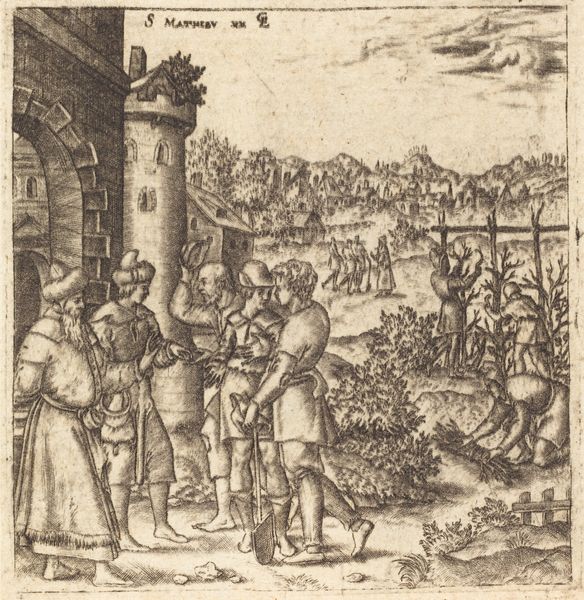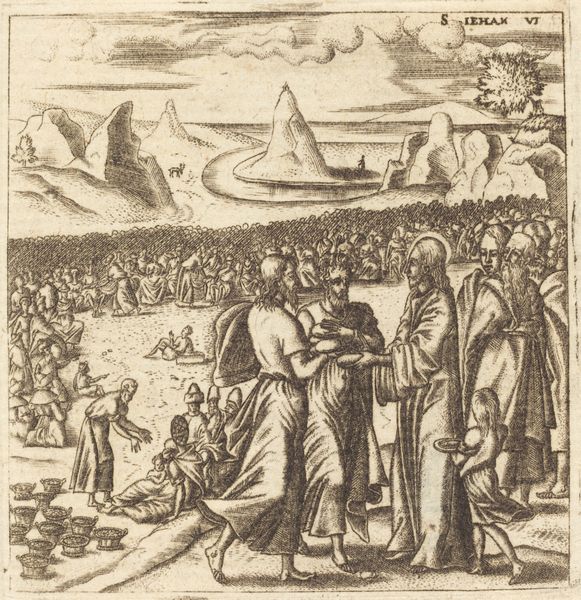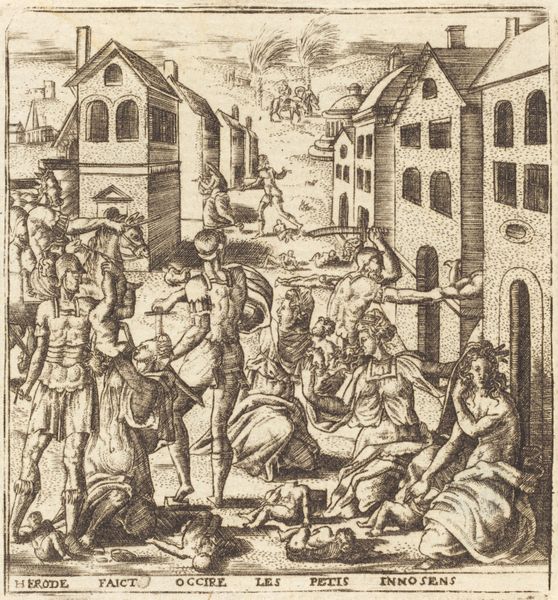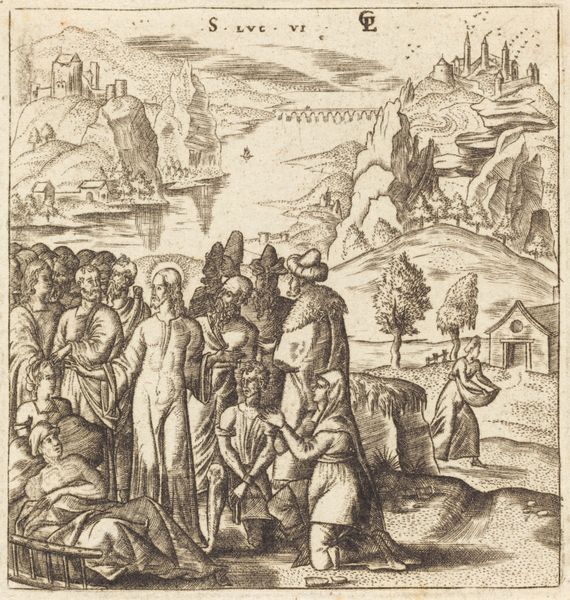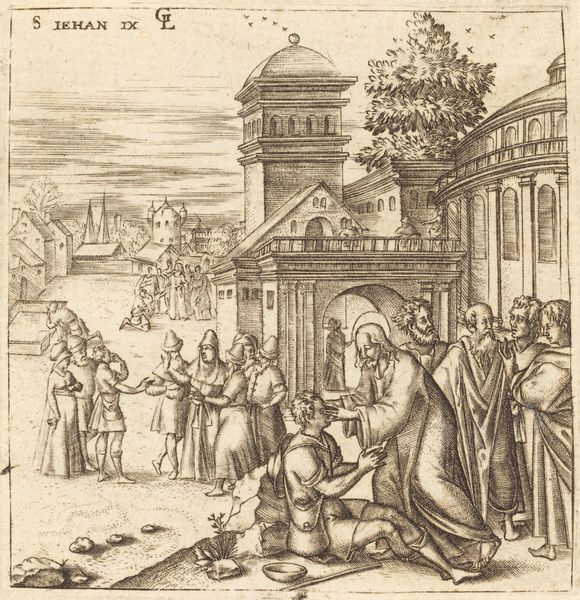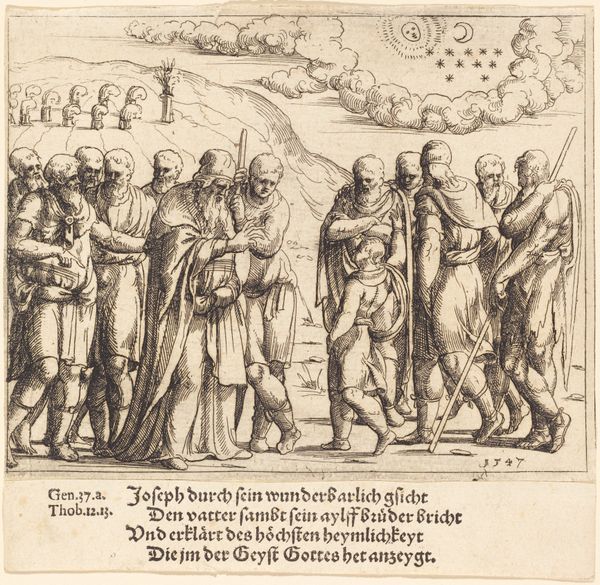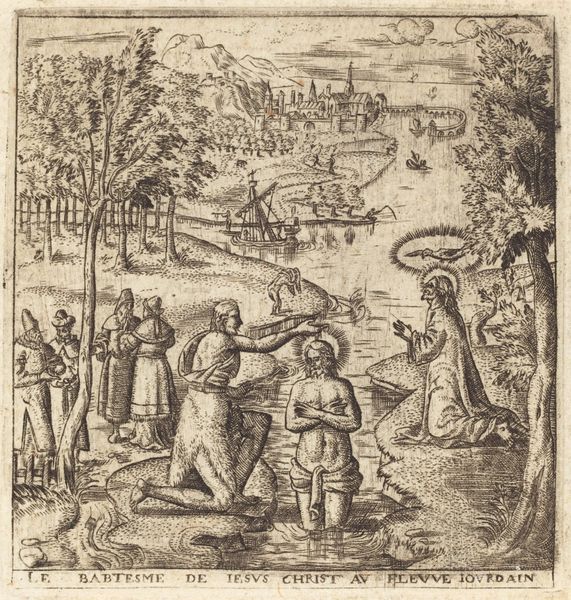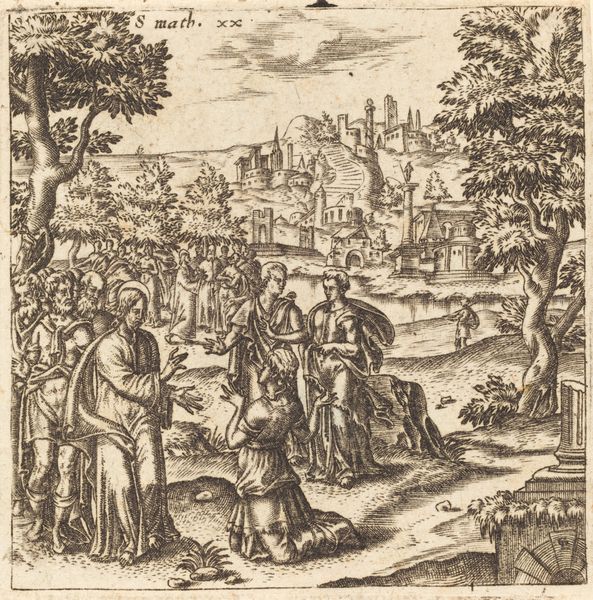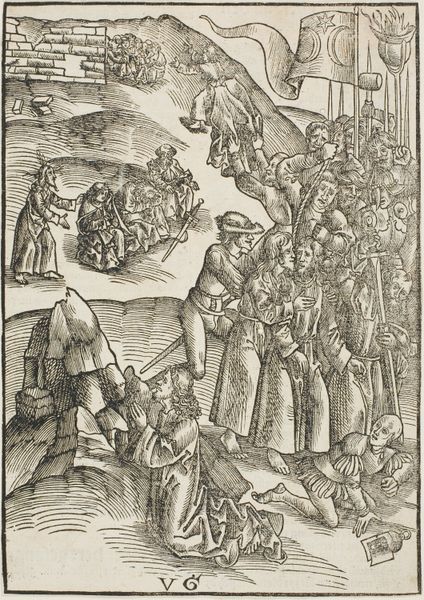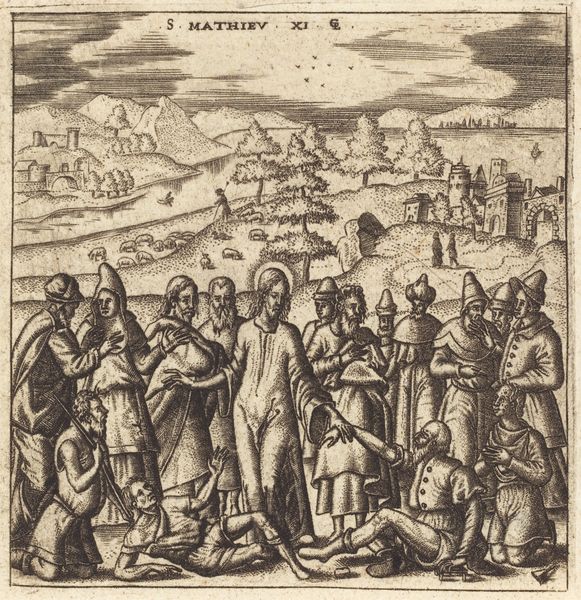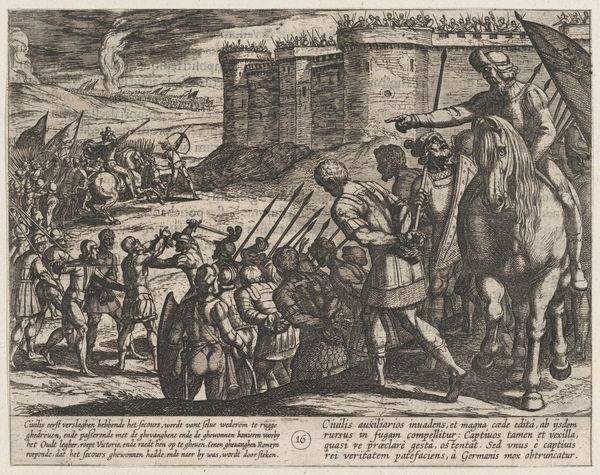
print, engraving
# print
#
landscape
#
figuration
#
11_renaissance
#
line
#
history-painting
#
engraving
Copyright: National Gallery of Art: CC0 1.0
Curator: This engraving, “Christ and the Centurion,” dates to around 1576-1580 and is attributed to Léonard Gaultier. What strikes you about it? Editor: The first thing that catches my eye is the dense network of lines; it creates a remarkable amount of detail and texture in such a small print. The architectural background is also pretty wild. Curator: It’s fascinating how Gaultier used the print medium to circulate a particular narrative. The story itself, drawn from the Gospel of Luke, highlights a Roman centurion’s profound faith in Christ’s healing power. Think about the implications of spreading such imagery during the Reformation. Editor: Yes, the politics of imagery are always in play. Here, Gaultier's choice of engraving--a process involving skilled labor and mechanical reproduction--opens up questions about accessibility and consumption. Were these prints widely disseminated and by whom? The paper itself, and the ink, become silent witnesses. Curator: Precisely! Consider also the historical context of this piece: Renaissance Europe and the pervasive influence of religious and classical themes in art. We see a landscape typical of the period in the background, despite the biblical setting. How does that blend of elements affect the image's public role and potential impact? Editor: It perhaps situates the biblical story within a recognizable world for its contemporary audience, thereby lending it a sense of immediacy and realism, no matter the materials being used. And I'm also curious how Gaultier's specific technical skill as an engraver was regarded within the artistic hierarchies of the time. Was printmaking seen as "lesser" than painting, for instance, and how did that impact the value and reception of pieces like this one? Curator: That’s a great question that certainly speaks to its production. And you’re right—analyzing the materials and techniques allows us to understand its cultural and historical impact better. Editor: Exactly, focusing on materiality gives a rich sense of context. Thank you for sharing that fascinating insight, it has brought new life to my view. Curator: My pleasure. Examining these details can certainly broaden one’s perspectives, allowing us to explore the intersection between production, social impact, and artistry, too.
Comments
No comments
Be the first to comment and join the conversation on the ultimate creative platform.
